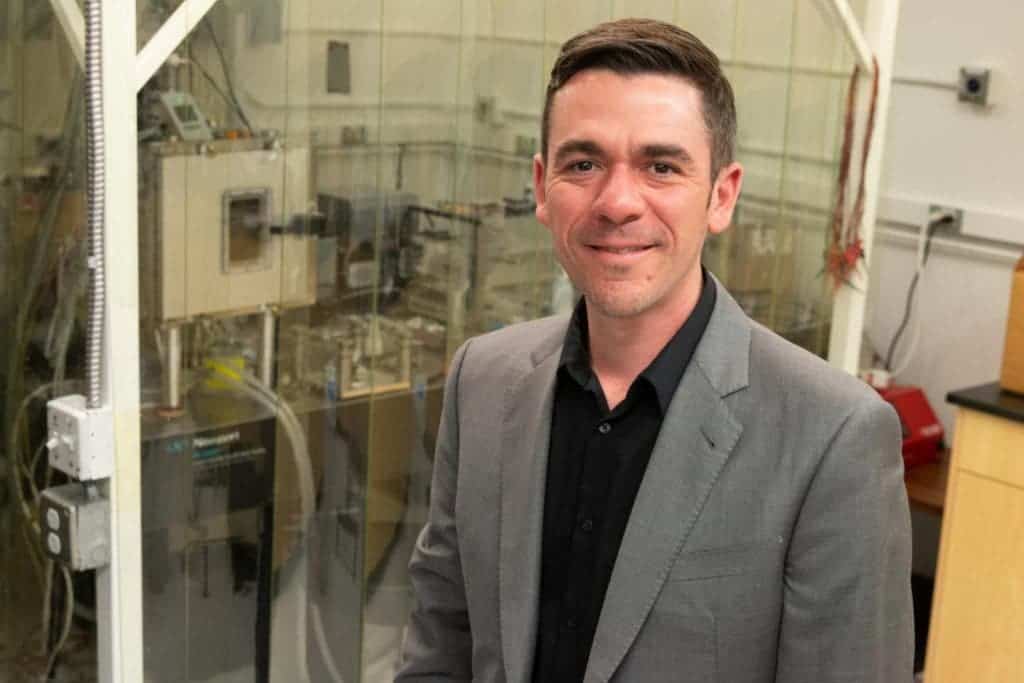A mechanical engineer at the University of Utah has found a ‘loophole’ around a physical principle that allows a device to convert wasted heat into electricity. The nanotechnology harvests heat from an object by placing two surfaces until they’re almost contacting one another. In the future, this setup might not only be able to cool down mobile devices like laptops and smartphones but it may also be able to channel their heat into more battery life.

University of Utah mechanical engineering associate professor Mathieu Francoeur. Credit: Dan Hixson/University of Utah College of Engineering.
The device in question, called a “Near-Field Radiative Heat Transfer Device”, was elaborated by Mathieu Francoeur, a mechanical engineering associate professor at the University of Utah. In order to harvest heat, this device blows past the so-called blackbody limit.
A black body is an object that absorbs all the electromagnetic radiation (i.e. light) that strikes it. However, in order to stay in thermal equilibrium, the black body must also emit radiation at the same rate as it absorbs it. For this reason, a black body also radiates well — it’s why stoves must be black.
The theoretical blackbody limit tells us the maximum amount of heat that can be emitted from an object. However, this ceiling is known to be no limit at all when the spacing between objects is small enough.
Francoeur and colleagues devised a 5mm-by-5mm chip, which is no bigger than an eraser head, made of two silicon wafers spaced by a nanoscopic gap only 100 nanometers thick — that’s one thousandth the thickness of a human hair.
“Nobody can emit more radiation than the blackbody limit,” he said. “But when we go to the nanoscale, you can.”
The chip was placed in a vacuum. The researchers then heated one side of the chip and cooled the other side separated by a tiny gap, creating a heat flux that can be converted into electricity. Generating electricity in this manner is not novel, but where the new study shines is in its demonstration of fitting two silicon surfaces close enough to achieve this effect without them touching each other. The closer the two surfaces are to one another, the more electricity can be generated.
About two-thirds of the energy consumed in the U.S. each year is lost as heat. Francoeur envisions a version of his chip in the future which cools down laptops and smartphones and channels extra electricity to the battery. He estimates that battery life could potentially be improved by 50% using this technology. For instance, a laptop with a six-hour charge could last nine hours. The blackbody chip could also be used to up the efficiency of solar panels or in automobiles to convert heat from the engines to power the electrical systems.
“You put the heat back into the system as electricity,” he said. “Right now, we’re just dumping it into the atmosphere. It’s heating up your room, for example, and then you use your AC to cool your room, which wastes more energy.”
The findings were published in the journal Nature Nanotechnology.









